Your air quality inside might not be as healthy as you believe. Based on the Environmental Protection Agency, organic chemical compounds that you find in your home, such as cosmetics, paints, disinfectants and even fuels release a variety of toxic chemicals and toxins in the air. These are the most significant cause of the sick building syndrome a serious health risk which causes headaches and hypersensitivity to skin irritations and other issues.
The positive side is that these substances are simple to eliminate. Alongside disposing of household chemicals that are not needed and securing your home with plants that purify the air aids in the production new air.
What Chemicals Should I Avoid?
Because we spend the majority of our time inside and in the air, a healthy quality of air should be the top priority. There are hundreds of substances that circulate in the air each day, and you may not be aware of it! Understanding what they are and where they are derived from can help you determine which one is the most suitable to your home.
Here are a few of the most commonly used toxic substances that are located in indoors:
- The Benzene chemical: This special toxin typically found in detergents, varnishes and rubber. It is also found in paints, plastics, flooring and other dyes.
- Trichloroethylene This chemical is often used in adhesives, varnishes lacquer, printing inks and varnishes.
- Formaldehyde This chemical is present in a variety of locations, including paper towels and shopping bags for groceries, tissues used to wash your face, and cigarettes.
- Toluene Oils paints, paints polishes and stain removers all contain the chemical toluene.
- Ammonia Ammonia is commonly found in many cleaning products.
- Xylene Xylene can be a hazardous chemical and is found in plastics including soda bottles as well as bottles for makeup and household cleaners.
- Carbon Monoxide This gas is produced by automobiles, stoves, and fireplaces.
The Best Air-Purifying Plants for Your Home
Fortunately, there’s numerous varieties of plants that act to purify the air that can rid your home of harmful chemicals. From palms and flowers to tropical fruit plants there’s a plant that is best suited to your requirements!
1. Chrysanthemum
The vibrantly colored blooms are an essential part of your home, particularly in the autumn. Chrysanthemums can be considered to be one of the most effective air purifying houseplants to cultivate and are thought of as to be the most efficient. They help fight benzenes and ammonia which are both extremely hazardous chemicals.
- Care Tips: Make sure your mums are getting at least 6-8 hours of sunshine a day. They require watering every week and must be planted in a well-drained soil to allow the flowers to develop fully.
- The health benefits: These flowers are great for people suffering from respiratory disorders hyperthyroidism, hyperthyroidism or excessive blood pressure.
- Toxicity Chrysanthemums have a naturally-produced insecticide known as pyrethrin. It is harmful to cats, dogs and horses, as well as children.
2. Spider Plants
If you’re in search of an option that is easy for beginners then this spider plant is the best option for you. They require minimal maintenance and are not toxic that’s a plus for those with curious pet companions. This plant is very effective in removing harmful toxins from the air, including carbon monoxide, xylene , and formaldehyde, a chemical that could cause cancer.
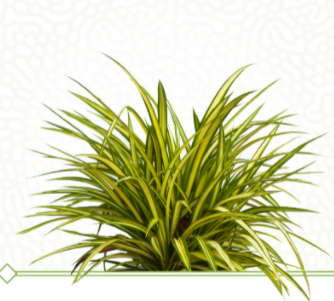
- Care tips These basic plants can be easily adapted to any setting and prefer a spot near a area where they will receive plenty of lighting. You should water the plants regularly (every 2 to 3 weeks) as the soil starts drying out. This is easily checked by putting your finger into the soil and observing whether it is dry to the feel of your finger.
- Benefits to health: Spider plants decrease carbon monoxide levels. This helps those suffering from fatigue, colds, and headaches.
- Toxicity This herb is not toxic and safe for both children and pets.
3. Dracaena
Are you looking to add some spice to your office’s greenery? The stunning tree-like plant comes with shiny leaves that can reach as long as 1 foot and just a few inches wide which makes it the ideal accessory to any space. Dracaenas can be the ideal choice for those who own plants because of their ability to purify air that remove formaldehyde, trichloroethylene carbon dioxide, and benzene. A tip for you Cleansing the upper and the undersides frequently with a damp cloth lets the plant exchange air without restriction.

- Care Tips: Filtered indoor light (through the sheer curtain that is placed in front of a bright window) is perfect for dracaenas. Do not put the plant directly in sunlight since it will cause scorching of the leaves. They also require only a minimal water. Just be sure to mist your leaves regularly and keep the soil damp.
- The health benefits This plant decreases high levels of harmful chemicals that can cause respiratory illnesses, anemia, and fatigue.
- Toxicity Dracaenas have a chemical compound known as saponin. It can make the plant poisonous to dogs and cats. If consumed, it can cause vomiting, diarrhea as well as weakness and an inability to eat.
4. English Ivy
They are excellent indoor hanging plants for those trying to make your home look more attractive. English Ivies are perennial vines which fight chemical and toxic substances, as well as Fecal particles! They are also known for reducing the levels of mold inside your home.
- Care Tips: English ivies enjoy bright sunshine, but avoid direct sunlight otherwise, the foliage could burn. Do not let the soil get dry and ensure it stays constantly moistWe recommend inspecting the soil once a once or twice a week to make sure that it’s not drying out.
- The health benefits: English ivy has properties that are anti-inflammatory, anti arthritis and antioxidant. It is a good choice to alleviate issues like obstruction of the airway or swelling of the bronchial passages.
- Toxicity When eaten orally English Ivy is mildly toxic to pets and children.
5. Peace Lily
You’ll never miss a good classic peace blooming lily! Make your home more inviting with this plant that purifies the air and you’ll never want to go back. These gorgeous flowers will help eliminate harmful compounds like benzene and trichloroethylene.
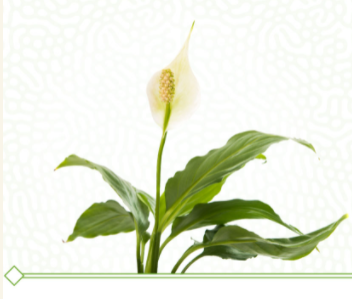
- Care tips Peace Lililies love partial shade, and may thrive in areas with no windows. You should consider placing the plant about 6-8 inches away from the north or west-facing windows. Peace lilies can be effective in telling you when they require water. The plant will grow sag when thirsty, so consider it as a signal to take care to water it. In general, you should water it every week at least and ensure that the soil is wet.
- Benefits to health: Peace flowers are known for their ability to eliminate toxic chemicals and toxins from the air, which includes mold spores. They also stop the growth of mildew. This is beneficial for those suffering from breathing issues such as asthma.
- Toxicity Keep the peace lilies in your mind. They can be toxic to dogs and cats therefore be sure to keep them out of the reach of your pets!
6. Golden Pothos
Also also known as Devil’s Ivy, this indoor hanging plant is very durable and thrives in all kinds of environments. It can grow to 8 feet, so it’s a wonderful plant to have in your living or bedroom room! Golden pothos also helps keep the air inside your home healthy by removing many chemicals and toxic substances.
- Care Tips: Keep the plant in some shade or indirect light. The plant should be watered every week or whenever the soil is dry to the surface.
- The health benefits: If you find yourself looking at screens all day Pothos plants are believed to ease irritation and eye strain, and ease mental fatigue.
- Toxicity Pothos plant species are poisonous to cats and dogs. They may cause irritation and burning in the mouth, and difficulties swallowing.
7. Rubber Plant
This plant that is low maintenance is gorgeous to see and needs minimal care. The plant is a naturally humidifier that ideal for windowsills or desk. Plants made of rubber are able to remove pollutants in the air and remove mold spores.
- Care Tips: Rubber plants prefer bright indirect light that’s not too hot. The plant should be placed close to a window and an open curtain can help give it the ideal amount of light. They need more water during the growing season in summer.Keep the soil wet and wipe the leaves using a damp cloth so that your plant can take in more sun.
- Benefits to health: These plants do not emit pollen, making them the perfect plant for people suffering from allergies.
- Toxicity Rubber plant species are poisonous — they contain an oozy sap within the stems that could cause intestinal problems when they are ingested by animals or humans.
8. Boston Fern
These beautiful ferns make an excellent for any house! What makes them more appealing is their capability to eliminate toxic indoor air pollutants like formaldehyde toluene, xylene, and benzene.
- Care tips Boston the ferns love growing moist and high humidity soil. They don’t require bright conditions to flourish — a suitable spot is the bathroom. In the spring and summer it is recommended to water your ferns every regularly, preferably twice per week to ensure that the soil stays well-drained and moist.
- Benefits for health: Boston Ferns can help replenish the moisture levels in the air naturally. This is great for those suffering from dry , dry noses and skin.
- Toxicity This kind of fern safe for pets, humans and even cats. If you purchase one for your house, you may even spot your furry friend chewing or playing around with the leaves!
9. Areca Palms
Bamboo-like palms are not just beautiful, but they are they are also among the top plants for air purification. They’re naturally coolers that take out xylene as well as toluene from the atmosphere . They are also considered to be the most effective air humidifier.
- Care tips These are best suited to bright indirect light and shaded from sun. It is important to water frequently (about every week) in the growing season to ensure that the plant remains hydrated. Limit watering during winter months.
- The health benefits This plant is known to eliminate carbon dioxide as well as produce tons of oxygen. This will help increase efficiency and energy levels.
- Toxicity Areca palms should not be considered to be toxic, however they can cause your pet to be ill ingestion.
10. Snake Plant
Do not let their name intimidate you! Snake plants are an excellent home improvement and are simple to maintain. They can be anywhere between 8 inches and 12 feet tall and are able to withstand extreme conditions of growth. They are ideal to purify your air from xylene formaldehyde, toluene and the trichloroethylene.
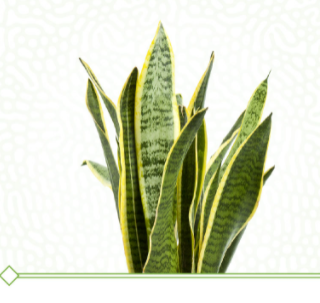
- Maintenance tips Be be careful to not overwater the snake plants, because the roots are susceptible to decay in soil that is damp. Although it is able to withstand the full sun and withstand dim light, it’s best to be placed in indirect light.
- The health benefits of Snake plants take in cancer-causing pollutants and may help those who suffer from allergies to air.
- Toxicity While human safety is assured Snake plants contain saponin, a poison for dogs and cats.
11. Aloe Vera
It’s possible to recognize the plant for its use as sunburn relief however, it’s also fantastic to purify the air! The aloe plant is well-known to have healing qualities as well as medicinal benefits and is a great choice for those who are new to the plant. They are well-known for eliminating formaldehyde as well as benzene from in the atmosphere, therefore make certain to put a few of them around the home.
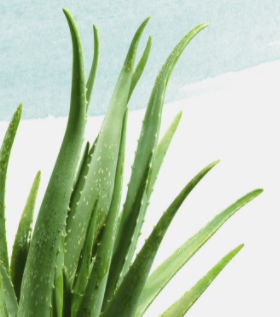
- Care tips Aloe Vera plant thrives in bright sunlight, so put it on a window or in a sunny area. They are drought-resistant and can be able to live without watering. Make sure to check the soil every couple of weeks and water it again when it’s dry to the point of touch.
- The health benefits: We all know aloe vera as the plant that can soothe burns and cuts and cuts, but it’s also delicious to drink! Aloe vera juice offers many health benefits, such as liver function, hydration digestion relief, and clear skin.
- Toxicity Though often regarded as a natural remedy for human beings, it’s moderately toxic to cats and dogs.
12. Chinese Evergreens
If you don’t have one this tropical species at garden in the present, it’s time to consider it! Chinese evergreens are cultivated in Asia to be ornamental plants and have been believed to be bringing luck. They’ve also been found to be effective in cleansing of formaldehyde and benzene.
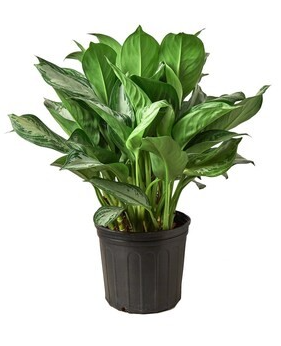
- Care Tips: Place your plant in an area that’s dim and humid. We recommend an area with a bathroom. Be sure to periodically mist the leaves in order to stop browning. Also, water your plant once or twice per week or whenever it’s dry.
- Benefits to health: Chinese evergreens can increase the humidity of a room which reduces the chance of suffering from respiratory disease or other illnesses.
- Toxicity This is a plant that contains crystals of calcium oxalate insoluble which can cause harm to cats, humans as well as horses and dogs ingestion.
13. Broad Lady Palm
This beautiful plant is perfect for any living space or space on the floor. It’s not just gorgeous to behold however, it also demonstrates its outstanding air purifying properties. Lady palms with broad leaves are believed to remove formaldehyde, ammonia, and xylene and make the air in your home safer to breathe.
- Care Tips: Keep this plant out of direct sunlight and at temperatures between 60 and degrees Fahrenheit. In summer make sure to water the palm whenever it is not dry (check each week, or every other week or) to an inch of depth.
- Benefits for health: Broad lady palms have been found to be effective in removing contaminants and chemicals from the air. Therefore, it’s an ideal plant for people suffering from respiratory ailments.
- Toxicity This herb isn’t toxic for animals, however they do possess sharp spines at their base which could cause physical harm to your pet if they come too close.
14. Weeping Fig
Also often referred to as a ficus This popular houseplant requires minimal maintenance and thrives indoors and outside. You could reap the benefits by keeping the plant indoors, since it has been shown to be extremely effective in cleaning the air inside your home , and eliminating toxins like toluene and xylene.
- Care Tips: Be sure you place your weeping figs in bright indirect light and in a humid area (bathrooms are a great place). The plant should be watered regularly (once or twice per week) and ensure your soil has a good drainage but humid.
- Benefits to health: This plant is considered antibacterial and antifungal, as well as an immune booster – perfect for people who are frequently sick!
- Toxicity: Keep this plant away from pets! Weeping figs are poisonous to dogs and cats.
15. Flamingo Lily
The vibrant, tropical plant can provide the perfect accent to your living space . It is easy to grow indoors. The thing that many don’t realize is the fact that this plant is extremely effective at eliminating xylene, toluene formaldehyde, and ammonia from your home.
- Maintenance tips Since it is considered a tropical tree, they thrive best in humid conditions. Spray your leaves every day using a water bottle, or install an humidifier to ensure that your plant lives an active and healthy life. Maintain the soil at a moderate humidity, but do not overwater since it can cause root decay.
- The health benefits: Due to their large dark leaves they are one of the most effective plants for removing harmful toxic toxins. People who have breathing problems should invest in one for your office or at home.
- Toxicology: Flamingo Lilies are a source of calcium Oxalate crystals (just like Chinese evergreens!) and can be toxic to pets that cause swelling and difficulties breathing.
16. Bamboo Palm
The species is popular for its similarity in appearance to bamboo. The type of palm has slender rings on its trunks. They are low maintenance houseplants and effective in removing pollutants in the indoor air, such as benzene , trichloroethylene and.
- Tips for care: This species is found within dense forests, so it has adjusted to the low light conditions and does not depend on sunlight to thrive. It is recommended to water it well in summer and spring, and keep the soil constantly moist.
- Benefits for health: This plant effectively removes harmful chemical compounds from the air. This is beneficial for those who suffer from respiratory problems.
- Toxicity If there’s a home with pets You’re in luck! The plant is not toxic to pets, cats and human.
17. Gerbera Daisy
Are you looking for the perfect flower to brighten your home? Gerbera daisies could be the thing to choose. The bright flowers come in a range of shades and are ideal to add color to your home. They can also help get rid of harmful toxins in the air like formaldehyde and trichloroethylene.
- Care Tips: Place the flowers in the area where they’ll have plenty of light and ventilation (windows are the ideal choice). It is essential to keep this in mind particularly during the autumn, spring and summer seasons when it’s warm.
- The health benefits of Daisies are a remedy for digestive issues and can help reduce appetite.
- Toxicity Daisies of Gerbera are safe for dogs and cats which makes them a perfect plant for pet owners.
18. Philodendron
The easy-to-grow plants can thrive in nearly any conditions and thrive indoors all year round without complaint. What makes them more attractive is their capacity to eliminate formaldehyde from air, which is particularly harmful in small spaces.
- Care tips Philodendrons thrive in moderate indirect sunlight. They should be watered every 2 weeks. let the soil dry between waterings in order to prevent root decay. Any level of humidity is acceptable for the plants, but being humid will assist the plant in growing faster.
- The health benefits: This vacuum-like plant sucks pollutant-laden air and makes you feel more alert.
- Toxicity This plants is slightly toxic for dogs and cats It is best to keep away from pets to avoid discomfort, swelling, vomiting and much more.
19. Pineapple Plant
This plant is not only well-known for its delicious fruits It’s also among the few tropical plants ideal for pots. Every pineapple plant will produce one flower stalk that will later transform into a fruit. The benefits of this delicious plant and its capacity to generate greater oxygen levels and enhance the quality of air all night.
- Maintenance tips Since the plant is tropical, make sure to water it often and spray it with water to keep them wet. Make sure to place it in a sunny area for maximum growth. However shade that is dappled works to grow this species.
- The health benefits: Since this plant grows as a well-known tropical fruit, there are numerous health benefits to eating pineapple. It is ideal for chest pain as well as arthritis, bronchitis and sinus infections, just to mention several.
- Toxicity While this juicy fruit may be safe for pets however, the skin and leaves may not be so ensure that your pet is only eating the fruit!
20. Kimberly Queen Ferns
The bold and stunning plant is a lush evergreen fern that has a sculpted form and asymmetrical frosts. They are more resistant to drought, heat and direct sunlight than other varieties of ferns which makes them a very resilient plant. They also function as an air purifier in the event that they are planted indoors and are efficient in removing formaldehyde as well as alcohols.
- Maintenance tips Place it in the indirect lighting of the sun as well as allow top couple of inches of the potting soil to dry before giving it another watering. Furthermore the long fronds can be light green while the plant requires water.
- Benefits for health: This plant acts as an excellent air purifier and may help people with severe asthma or allergies.
- Toxicity: Good news! These ferns are safe for dogs, cats and human.
21. Parlor Palm
Parlor palms are indigenous to zones of tropical humidity in the Americas and can reach more than 6 feet tall. The plant is dark green with foliage that makes a lush and lush plant. It makes it an ideal houseplant for your dining room or living room. They also excel at eliminating Trichloroethylene and benzene. So put the plant in a place close to furniture that could emit in the process of releasing gas.
- Care Tips: Since this plant can grow quite high, it might require a few Repottings. It is recommended to water it every 1-2 weeks. put it in a place which receives moderate to bright indirect light. Don’t place the plant directly in sunlight because this could burn the leaves.
- Benefits for health: Since this plant does an excellent job at getting rid of trichloroethylene and benzene it’s an excellent option for people with asthma or other respiratory ailments.
- Toxicity: Many varieties of palm are considered to be to be toxic, however the parlor palm isn’t among them. They are suitable for cats, dogs and even humans!
22. Dwarf Date Palm
This spreading palm from the subtropical zone is great for owners of plants seeking large plants. The dwarf date palm can reach at least 6.5 feet tall with a width of 5 feet! It’s also very proficient in eliminating toxic chemicals like xylene within the air.
- Care Tips: Provide the brightest light with all-day sun, and keep your soil on the dry side. They also prefer humid conditions which is why you should lightly mist leaves when the environment is dry.
- Benefits to health: Though dwarf date palms don’t grow the fruit themselves however, they do produce seeds that have remarkable protection against oxidative damage and other health effects. They are rich in fibers as well as oleic acid, which have been linked to improved cardiovascular health.
- Toxicity These dates palms should not be toxic to dogs, horses or cats.
23. Corn Plant
A different variety of dracaena this plant is famous for its stunning foliage that can be found in different shades of yellow and green. The corn plant has also proven to be highly efficient in eliminating formaldehyde out of the air.
- Care tips This specific plant has become extremely popular with the community of plants and is simple to maintain. They can thrive in conditions of the low amount of light and the absence of water, but you should put it in indirect light and water it every two weeks.
- The health benefits: As with many dracaenas corn plants, the corn plant improves concentration and improves focus. Additionally, it boosts humidity, and is beneficial for people who suffer with dry skin or coughs.
- Toxicity Unfortunately this corn crop is poisonous to cats and dogs as it is a source of saponin.
When you’re thinking of improving your home’s appearance with new plants, consider not just how beautiful they look but also how they affect your health as well! As you are creating a more fresh area, take a look at our home plants for an added touch of charm.